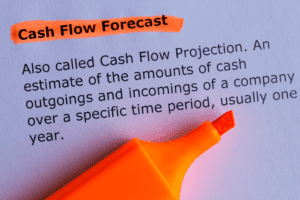
If the balance in the petty cash account is supposed to be $75, then the petty cash box should contain $45 in signed receipts and $30 in cash. Assume that when the box is counted, there are $45 in receipts and $25 in cash. This creates a $5 shortage that needs to be replaced from the checking account. Petty cash is a small amount of money a company keeps for small, incidental expenses. These minor payments include office supplies, stationery, meals, client lunch, stamps, etc.
Bookkeeping 101 – Business News Daily
Bookkeeping 101.
Posted: Mon, 23 Oct 2023 07:00:00 GMT [source]
Let’s say that at the end of the month, you have $49.15 remaining in your cash box, and you want to top your petty cash fund by $150.85 to get it back up to $200. Small businesses will often record all disbursements in a log and put one person in charge of petty cash to make sure none of the funds go missing. Petty cash is simply any physical cash your business keeps on hand to pay for small, unplanned expenses. Most businesses won’t keep more than a few hundred dollars in petty cash around.
Reconcile Your Petty Cash
Begin by appointing a petty cash custodian responsible for managing the fund. Secure the petty cash in a lockbox or cash register to ensure safety. Fund the fund through a withdrawal from an ATM or by writing a check, marking why do businesses use petty cash funds? it clearly in your accounting records. Establish a petty cash log for detailed and thorough tracking of all transactions. This log should run on vouchers collected by the custodian in exchange for cash disbursements.
- The custodian initiates a bank check request to restore the petty cash to its original balance, with a reconciliation of receipts and spending preceding replenishment.
- Without a physical, dedicated place to keep the petty cash, you’ll probably lose track of it, and/or make so many exceptions to when you use the petty cash that it stops being useful.
- When there is a shortage of cash, we record the shortage as a “debit” and this has the same effect as an expense.
- The custodial duties generally include enforcing petty cash rules and regulations, requesting replenishments, and dispensing funds.
- A petty cash fund is a nominal amount of money held by a business for small expenses.
- An employee can run out to the post office, not knowing the exact amount of postage needed on an item for the mail, and take petty cash with them to pay for the expenditure.
It is also appropriate for companies to either keep their petty cash in just one office or the main office of each division of the company. The important thing is to monitor your petty cash and keep track of it on a ledger. Therefore, it is only appropriate to keep petty cash on hand when a trusted employee can keep an eye on it. Do you need to stop and grab donuts for this morning’s staff meeting? Maybe you have an unexpected client drop by and you want to send out for bottled water or soft drinks. Small businesses handle small expenses like this by using a petty cash fund.
Want More Helpful Articles About Running a Business?
Occasionally, errors may occur that affect the balance of the petty cash account. This may be the result of an employee not getting a receipt or getting back incorrect change from the store where the purchase was made. In this case, an expense is created that creates a cash overage or shortage. A robust petty cash management system is integral for companies to guarantee the appropriate use and documentation of funds. This system is an internal control, fortifying the business against potential theft and fraud risks.
Petty cash funds allow employees to make small, authorized purchases without the hassle of filing an expense report. This, in turn, reduces bookkeeping tasks, prevents employees from paying out of pocket, and creates internal efficiencies for a company. If you plan on establishing a petty cash fund, it’s essential to implement the policies detailed above.
Setting Up Your Petty Cash Fund
Every once in a while, compare the petty cash balance recorded in your petty cash log with the actual remaining amount of cash in your lockbox. If the numbers don’t match, that means something went wrong, and you need to review each expense for any discrepancies. The key or combination should not be made readily available to all employees. Only the business owner and the petty cash custodian should have access. The use of a petty cash fund can circumvent certain internal controls.

The biggest perk to using a business card is that it automatically syncs with payment management software. No uploading receipts or assigning cash custodians to update the spreadsheet. Cash transactions have been on the decline for decades and plummeted even more in recent years due to the pandemic. Your petty cash fund may vary from other businesses, but it all depends on your type of business on what you want your amount to be. Small to medium-sized businesses typically have $25-$100 as petty cash. Larger businesses may range from $100-$500 and sometimes exceeding $500.
